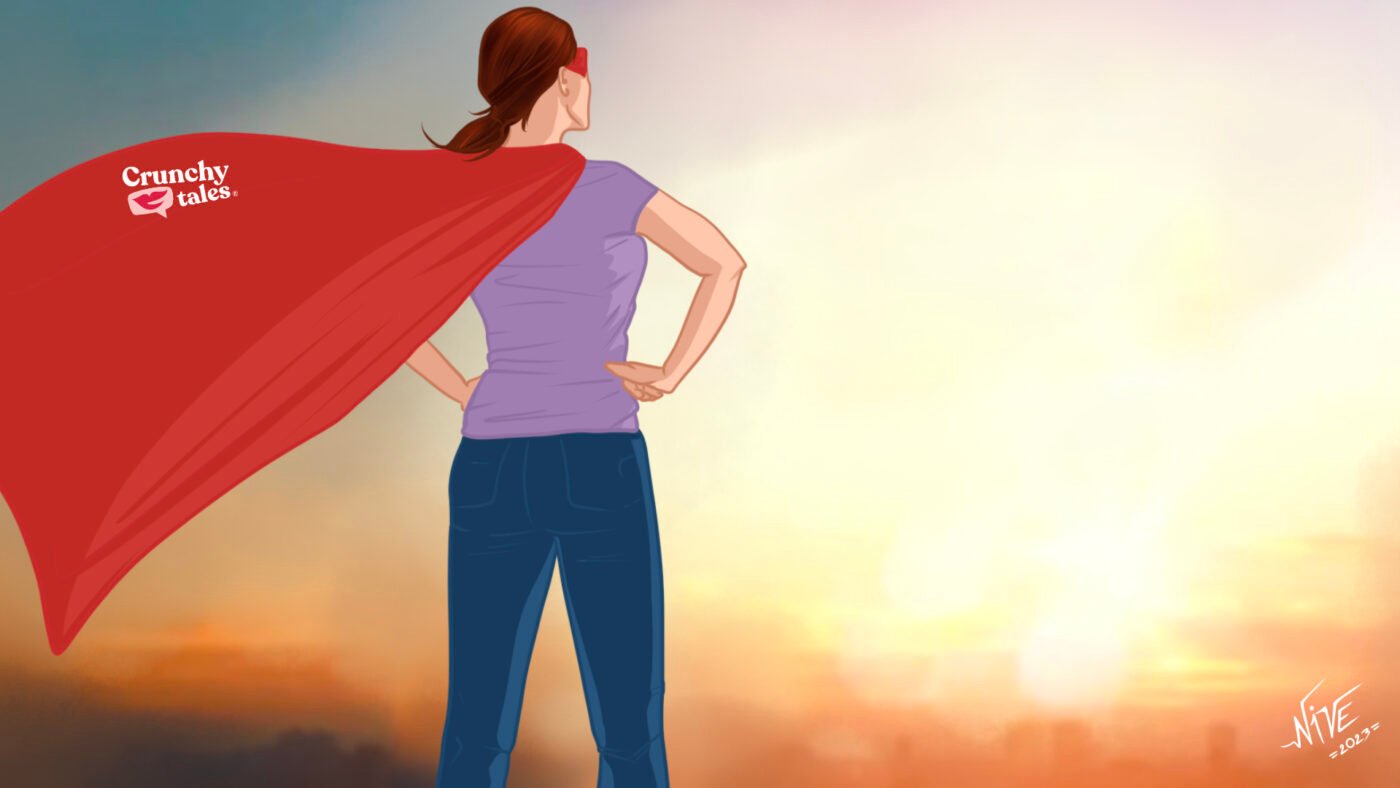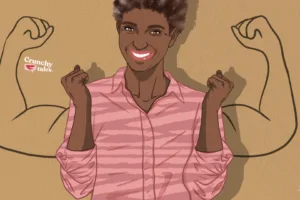7 Ways To Flex Your Resilience Muscle In Midlife
We all have our share of challenges and tragedies. Noone glides through life unscathed. It’s how we respond, grow and learn from these disruptions in our lives that makes all the difference. It’s what we call the power of resilience.
When we hit our 50s, the number of life difficulties we experience grows exponentially. According to Bruce Feiler, best-selling author of ‘Life is in the Transitions; Mastering Change at any age‘: “each of us faces dozens of disruptors“. One in ten of those becomes what Feiler calls “a life-quake, a massive change that leads to a life transition“. The average length of these transitions is five years. The upshot: “We all spend half our lives in this unsettled state“.
Disruptions may come in many forms in our families, relationships, health, financial life and careers. Divorce, widowhood, empty-nesting, menopause, illness, getting sober, the death of our parents and friends, job and financial losses and other hurdles become more and more common as we grow older and our lives become more layered and complex.
Not even mention, the “collective” disruptions that we experience together and that can make a huge impact, changing life as we “know it” (things like war, natural disasters and the most universal collective disruption in our lifetimes; the Covid pandemic).
These are days when “it’s hard to count on the world outside us“, as explains Dr Rick Hanson, author of ‘Resilient. How to Grow an Unshakable Core of Calm, Strength & Happiness’, a psychologist and well-being expert. “So it’s vital to grow strengths inside like self-worth, patience, kindness, and joy. These make you resilient: the foundation of lasting well-being in a changing world”.
How to strengthen your resilience muscle
Resilience (or resiliency) is our ability to adapt and bounce back when things don’t go as planned. Resilient people don’t wallow or dwell on failures; they acknowledge the situation, learn from their mistakes, and then move forward.
It’s the power that helps us to keep going and discover beautiful silver linings, against all odds.
When I was in my late fifties, despite the emotional challenges surrounding a cancer diagnosis, shutting down a business I co-founded and becoming an empty nester, I was filled with deep gratitude and a reignited passion for the next phase of my life.
Just like the phenomenon when lightning strikes a beach and turns the sand into beautiful crystals, it was the coincidence of three “lightning strike” experiences in my life that compelled me to dig deep to (finally!) focus on what I truly wanted to do with my life.
By learning the power of resilience, I was able to transform even the toughest times into periods of creativity and growth. And you can do it, too
Here’s how.
Keep calm and carry on
These five simple words can go a long way when you hit a rough patch. Written on a motivational poster produced by the Government of the United Kingdom in 1939 in preparation for World War II, they were intended to raise the morale of the British public, threatened with widely predicted mass air attacks on major cities.
Today they can motivate us to prevent to panic or getting too far ahead of ourselves when everything seems to go wrong. Worrying, anger, complaining, denial, or any of the infinite other ways we try to circumvent pain when facing a tough time, won’t change the situation.
Sticking to the present, rather than worrying about the future or dwelling on the past, and focusing on what is actually happening now and what is actually in our power to do now may be a good way to flex our resilience muscle.
Change your mind
These days it’s hard to count on the world outside. So it’s vital to grow strengths inside like grit, gratitude, and compassion. The key to resilience, and to lasting well-being in a changing world. And because of our brain’s neuroplasticity, we can change, reorganize and grow new neural networks. We can literally change the way we think, be grateful for what we have and decide how we want to experience challenges and disruptions.
Become a human being, not a human doing
It is important to carve out time in your busy schedule for self-care activities that you enjoy. Eat right, get more sleep and meditate. Meditation and mindfulness induce a heightened state of awareness and focused attention. Various studies demonstrate the practice can help relieve stress — as well as manage anxiety, reduce inflammation, and improve memory and attention.
According to motivational speaker, Gina Vild, “there are many ways to create positive change in one’s life. I created a clearing to allow for possibilities. I asked myself what constitutes a successful life, living as a human doing or human being. I then took a measure of how I am organizing my days and began to slash and burn my to-do list. I unshackled myself from being overscheduled to allow the opportunity for the unexpected, with time to explore and enjoy life as circumstances present“.
Get connected
Spend time in nature, recognizing the miracles of the natural world and how we are connected to it. Connect with positive people who care about, nurture and encourage you.
The Hartford Center for Mature Market Excellence® and the MIT AgeLab conducted a study that looked at transitions adults in their 40s, 50s and 60s experience and how they remain resilient. The most resilient adults in this study reported higher rates of spending time or talking with friends and family.
Are there friends and family you are close to and have important conversations with? Keep those connections strong. Whether it’s talking on the phone, meeting for a meal, or just hanging out, talk to the people in your network you rely on and who support you.
And finally, connect with yourself. Take time each day to recall a happy moment in your life and write about it. Relive it.
Share your story
Don’t hold it inside, share it with a therapist, people you trust, or write it down. Emotional, autobiographical storytelling can be a path to truly owning your story.
It will not only help you – it can inspire and help others. “Stories can be very healing and many people benefit from getting the opportunity to pass on their wisdom to others“, explains Sherry Hamby PhD in Psychology Today. “This can be especially powerful for people who do not always feel that they have the chance to help others. Resilience is strengthened by recognizing that we are all experts in our own lives and we all have something to share with others“.
Remember the silver linings of the past
Silver linings are simply the good aspects of challenging or painful situations. The ability to perceive silver linings is an optimistic mindset that promotes emotional resilience and the ability to adapt to future challenges.
Reflect on how you rose from past challenges and the growth you experienced. Were you ever laid off or fired from a job and ended up finding a much better one afterwards?
Pay attention and listen to good music
Last but not least, pay attention to the people around you. Few things are as important to your quality of life as your choices about how to spend the precious resource of your free time. Surround yourself with positive people and listen to music that reminds you of hope. Here’s my Third Act Quest “Resilience” Playlist on Spotify. Enjoy it!
Like this post? Support Us or Sign up to our newsletter to get more articles like this delivered straight to your inbox!






